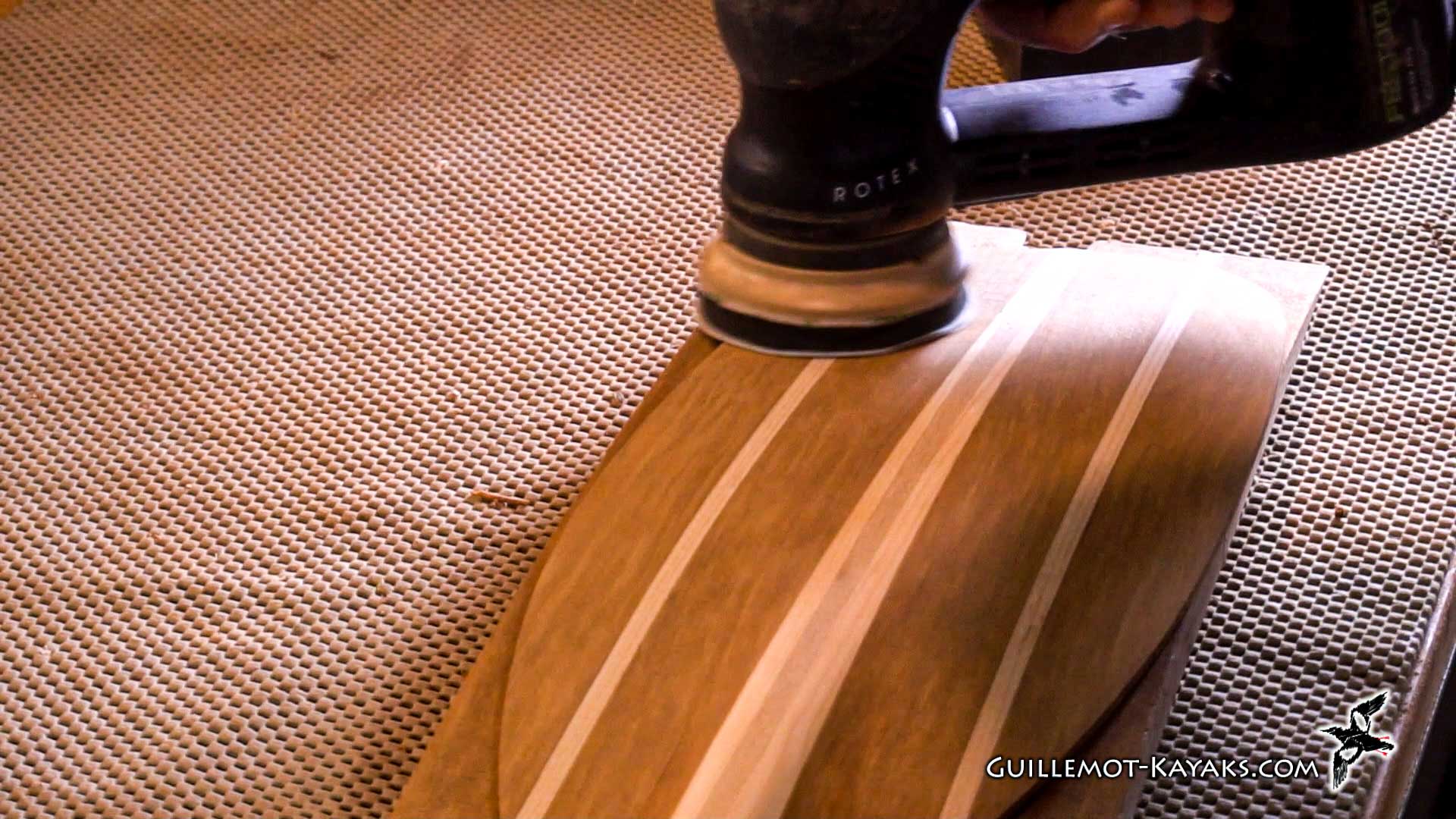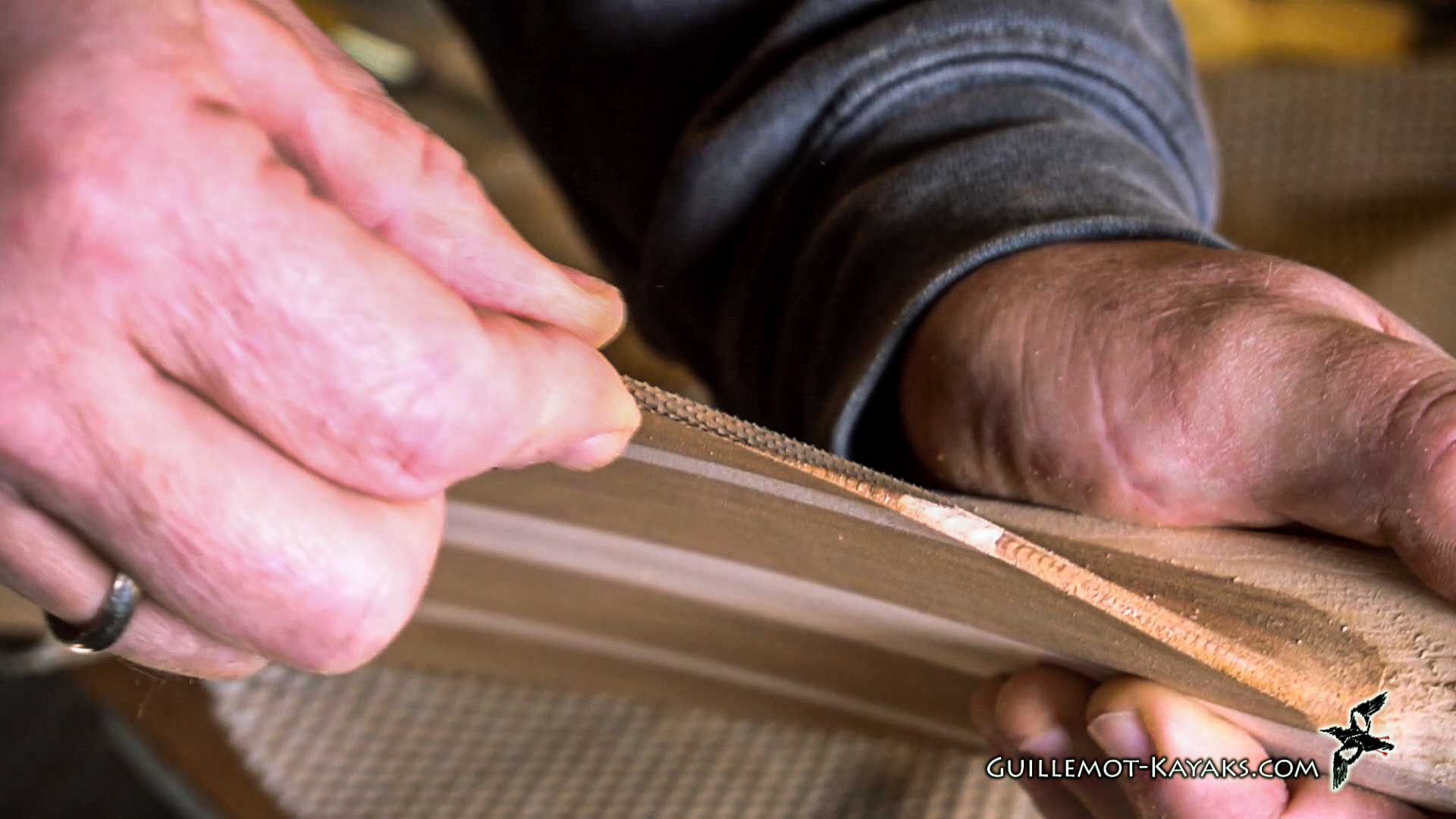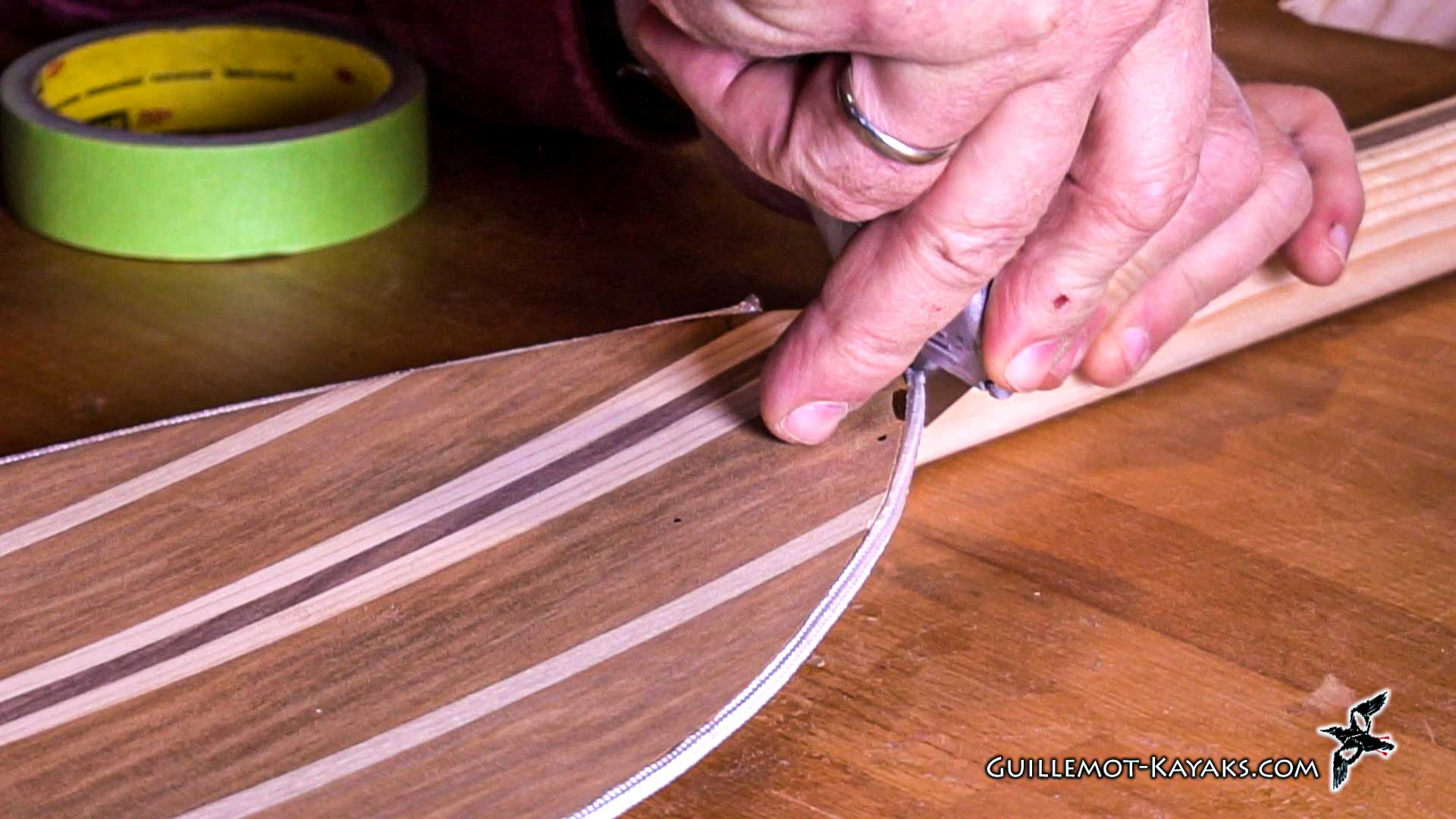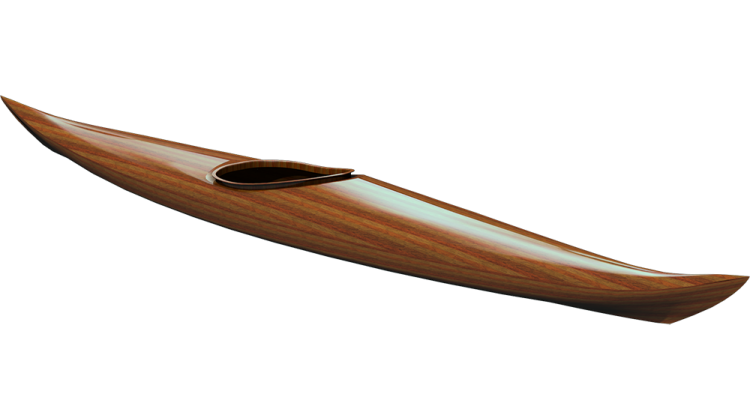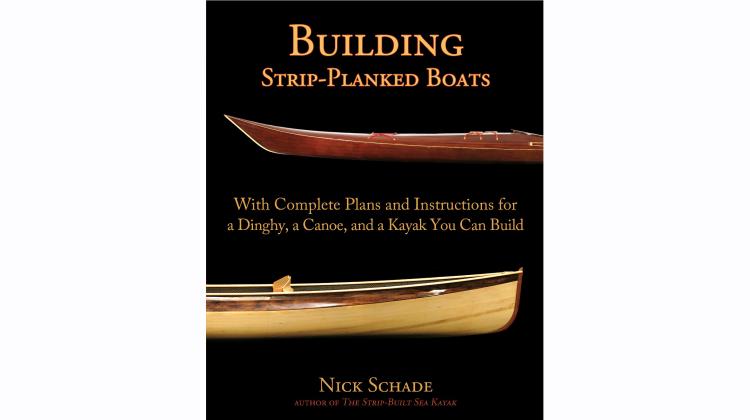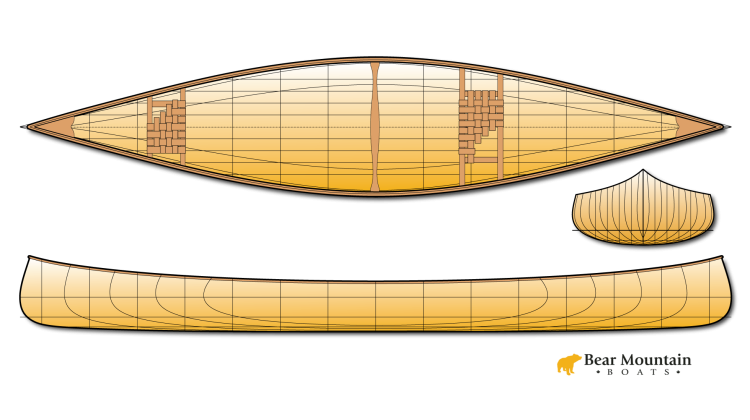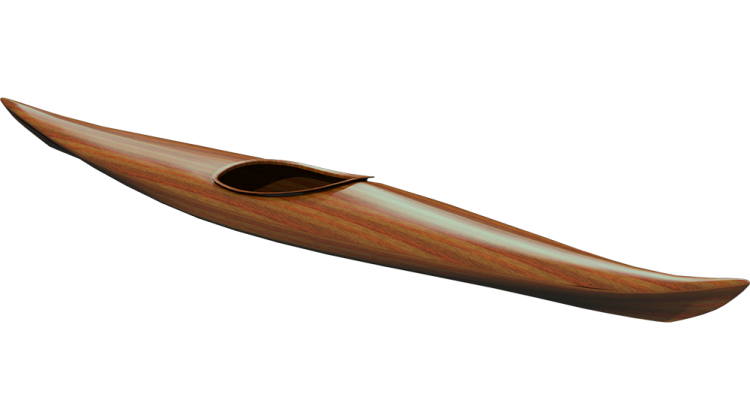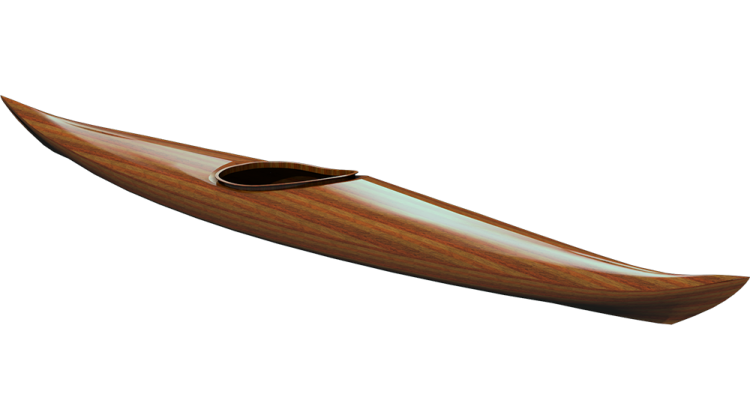I regularly bounce my paddles off rocks. I want a rugged and durable edge to absorb the abuse. I have found that para-cord saturated in epoxy resin is very tough. While you can't exactly cut down a tree with these paddles, they will handle paddling in rock gardens or doing whitewater.
I use a small rasp to start a shallow groove around the whole perimeter of the blade. This just provides a place to hold the cord until the epoxy bonds it to the paddle.
I use some heat and liberally brush epoxy on the cord to maximize the penetration of resin into the cord.
hey welcome back to the Guillemot kayaks
workshop I'm Nick Schade and I'm making
kayak paddles.
in this episode I'll do some finish
sanding on the blades and then put a
reinforced nylon edging around the blade
this parachute cord edging makes a
really rugged blade and I think it's a
good addition to a wooden paddle so
let's get to it
[Music]
I'm gonna end up reinforcing this edge a
little bit of nylon cord so this cord
will go around this edge it makes a
really tough strong binder around the
edge of the panel but it's a little
tricky to have stay in place while
you're trying to mount it you've got to
get it glued on there saturated and it's
gonna get covered with fiberglass and I
want to keep that centered on that edge
it's basically the diameter of this cord
is the same as the width of the blade at
the edge right there so I want to keep
it centered on there so I'm using a
little fine rasp here and just going
along and putting a little cove right
along that edge and that way when I go
to put the cord on there it'll have a
place to lay and stay centered while the
glue is drying
the basic process here is we want to
secure this cord in place settled in
that groove and make it ready to glue in
so what I do is I start with a little
bit of tape and I secure one end in
place
stick that tape well to the cord and now
I want to prepare another piece of tape
the other end and I'm going to pull the
cord tight all the way around the edge
and that groove I made with the rasp
should hold the cord you want some
tension on this cord and then tape it
down at the other end now I'm going to
take a little bit of superglue put it
right up here at the end those sides
give a moment for that glue to soak into
the cord and then give it a little
spritz with the CA glue accelerant glue
is dry you can pull off the tape and I'm
just going to cut off the excess cord
right here if the cord comes on down a
little bit just place it right back in
the groove
so I'm gonna coat the whole blade with
epoxy the reason for putting on epoxy is
to saturate this parachute cord I want
to get that nylon cord completely
saturated with epoxy it's hard to get
epoxy on the cord and not get it under
the rest of the blade if I only get the
blade partially coated I didn't watch
eNOS so by coating the whole blade I'll
get an even coat on it
and I want it to soak in so right now is
fairly cool in my shop even low
viscosity epoxy has a hard time running
into the braid of the parachute cord so
I'm going to heat it up and that will
make it so the epoxy is lower viscosity
and sucks in better
[Applause]
now I'm going to paint on epoxy and I
primarily want it on the cord so as they
brush it on and brushing it onto the
cord and I'm scraping it off the edge of
the cord that way most of the epoxy gets
drawn off the brush right at the cord
and you see I end up dripping a little
bit but I want to over saturate that's
really flood the cord with the resin to
make sure it's got plenty of resin on it
in doing this it's very likely the cord
will pop off a little bit just realign
it it might happen several times and
then I'm just going to get epoxy on the
rest of the blade just to make sure it's
fully saturated and now all again brush
some on the cord from the power face
side of the blade and again we're trying
to get
a lot of resin onto that cord
alright so now I'm going to give another
heat treatment to help lower the
viscosity that epoxy get it drawn into
that cord
[Applause]
as I do this you see the wood outgassing
a little bit as a wood heats up the air
trapped in the wood gets forced out of
the grain and bubbles up through the
epoxy that's not a necessarily a
desirable thing in itself but it does so
that the wood is getting warm and those
bubbles will get scraped off if I hit it
briefly with the heat you see the
bubbles pop but the wood is warm so it's
a driving air out of that grain so now
I'm going to just scrape off the excess
resin I don't want a whole lot of resin
on here I just want enough to saturate
that cord and then I'll take a rag and
get rid of any drips and sags excess
resin I'm going to try and avoid hitting
the cord itself any excess resin there I
want it to just get soaked in but I
don't want any drips
so that's it for this episode in the
next episode we'll fiberglass the blade
and get a fill coat on it so if you
liked this episode give me a thumbs up
if you're enjoying this whole series hit
subscribe if you're really into what I'm
doing here go over to my patreon page
and ship in a little bit every little
bit helps so once again thanks for
watching and happy paddling.

